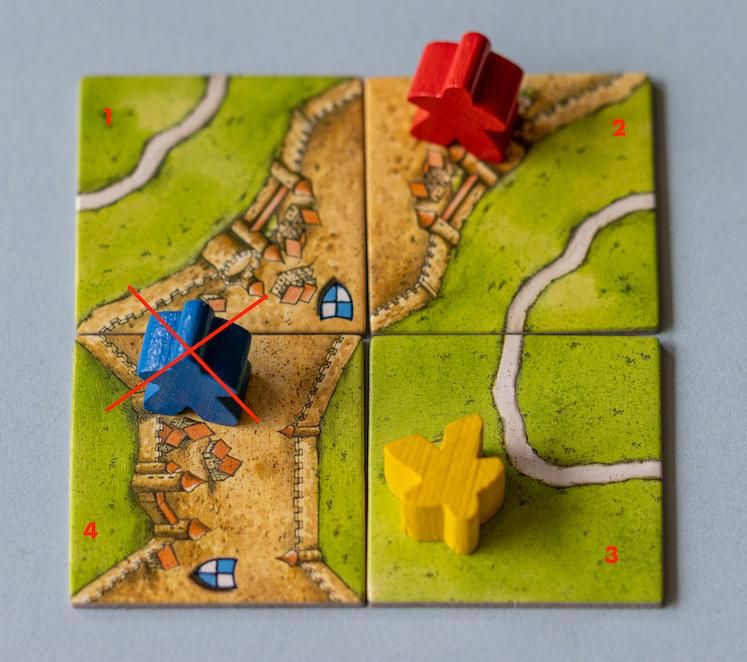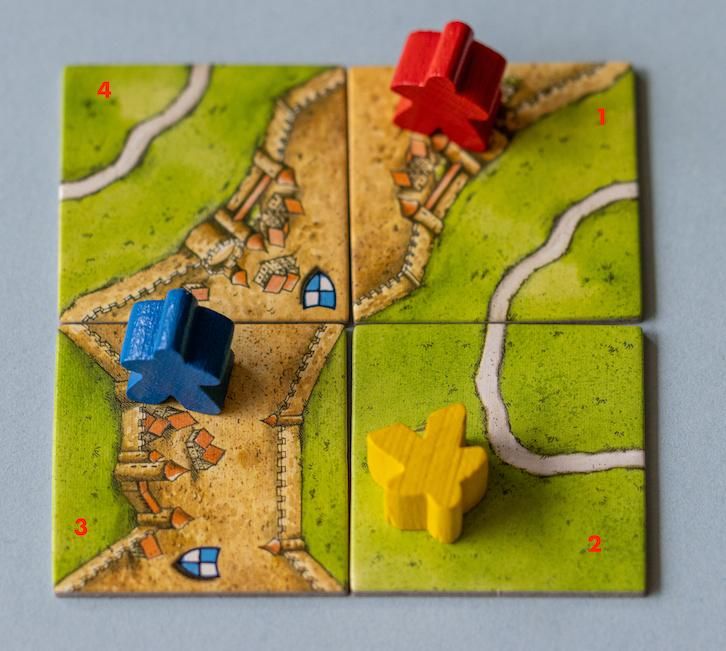Learn more about our current research projects with third-party funding. You will also find information on research infrastructure in Linguistics (linguistic organisations, databases, corpora).
Research Training Group Interaction of grammatical building blocks
- Project title: Interaction of grammatical building blocks (IGRA)
Spokesperson: Gereon Müller
Funding organisation: DFG (GRK 2011)
funded since: April 2014
Learn more
The Research Training Group (IGRA) provides funding for 12 doctoral students and two postdocs.
IGRA puts its focus on the phonology, morphology, and syntax of natural languages. Detailed, large-scale investigations of these form-based components of grammar by cooperative research projects have arguably been neglected in recent years in Germany, but internationally the general area of research has gained substantial momentum as a consequence of new developments. These developments have accumulated an impressive body of knowledge about (i) the representations of linguistic expressions of varying complexity (from signal to sentence), and (ii) the grammatical building blocks (i.e., rules, operations, constraints, schemata, extralinguistic factors) that restrict the distributions of linguistic expressions. In addition, there are some plausible – and, as in the case of Optimality Theory, sometimes widely adopted – hypotheses as to how the grammatical building blocks that have been postulated interact with one another.However, a comprehensive, systematic investigation of the possible interactions of grammatical Building blocks from different theoretical perspectives, on the basis of a multitude of detailed empirical studies of phonological, morphological, and syntactic phenomena from typologically different languages, and by invoking all available research techniques (introspective, experimental, corpus-based) is so far outstanding.The individual research projects of the IGRA take as their starting point a taxonomy that distinguishes between excitatory interaction and inhibitory interaction on the one hand, and between simultaneous interaction and sequential interaction on the other hand. Cross-classification then yields four types of interaction:(i) excitatory sequential interaction of building blocks: feeding, counter-bleeding; (ii) inhibitory sequential interaction of building blocks: bleeding, counter-feeding; (iii) inhibitory simultaneous interaction of Building blocks: competition (disjunctive blocking, conflict); and (iv) excitatory simultaneous interaction of Building blocks: cooperation.All four kinds of interaction are covered by the expertise of several members of the Research Training Group; and they are all deeply grounded in the concept of the structured Training programme.In the first funding period, we have tackled some fundamental questions and investigated a number of indvidual problems. Against this background, research in the second funding period will focus on eight areas: (i) domains, (ii) representations, (iii) iterativity, (iv) cumulativity, (v) frequency, (vi) analogy, (vii) exceptions, (viii) synthesis.
Grammatical Strength in Prosodic Morphology: Typology and Theory
- Project title: Grammatical Strength in Prosodic Morphology: Typology and Theory
Principal Investigator: Eva Zimmermann
Funding organisation: DFG (Independent Junior Research Group)
funded since: 2019
Learn more
The speech sounds of languages have gradient phonetic properties. The final sound of the English word ‘bad’, for example, has arguably different acoustic properties in contexts like ‘bad times’ and ‘bad guys’ for most speakers: It is partially devoiced in the former context but not in the latter (Zsiga, 2013, 49). The phonological representation that encodes speakers’ grammatical knowledge, however, abstracts away from this particular gradient difference and the same phonemic representation of a voiced obstruent /d/ is standardly assumed in both contexts. This neutralization is a consequence of the fundamental assumption that linguistic representations are categorical: An element is present or not and either has a certain property or not (Chomsky and Halle, 1968). This research group investigates the hypothesis that such asymmetries where apparently identical grammatical elements behave differently is indeed due to differences in their gradient strength (Smolensky and Goldrick, 2016; Rosen, 2016; Zimmermann, to appear). It hence challenges the view of categorical linguistic representations and argues that grammatical computation is sensitive to gradient differences.This research group will develop a typology of the three strength-based patterns of competition, lexical under- and overapplication, and lexical cooperation. The expectation is that they are restricted in systematic ways that follow from a formalization of strength in phonological theory but remain coincidental under alternative models of grammar without reference to strength. In addition, most alternative accounts of these phenomena rely on morpheme-specific phonological constraints or sub-grammars (Inkelas et al., 2004; Inkelas and Zoll, 2007; Pater, 2009) whereas the assumption of strength in phonological representations allows a modular organization of grammar where the phonology has no direct access to morphological information. The area that is best suited for this study is Prosodic Morphology and thus the broad empirical domain of changes in the suprasegmental properties of words (=length, accent, tone) that are not predictable from the phonological structure alone but refer to morpho-syntactic information. Prosody is not only the empirical domain where most implicit or explicit notions of strength have been proposed in the literature (Halle and Vergnaud, 1987; Vaxman, 2016b), the main aim of Prosodic Morphology is to connect morphology and phonology via phonological representations, which is exactly the main goal of a theory of phonological strength as well.
Linguistic organisations, DFG research clusters, linguistic databases and corpora
Linguistic organisations
- German Linguistic Society (Deutsche Gesellschaft für Sprachwissenschaft, DGfS)
- Association for Linguistic Typology (ALT)
- Linguistic Association of Great Britain (LAGB)
- The Linguistic Society of America (LSA)
Linguistic research centres
- Leibniz-Centre General Linguistics (ZAS) (Berlin)
- Institut für Deutsche Sprache (Mannheim)
- Max Planck Institute for evolutionary anthropology (Leipzig)
- Max Planck Institute for human cognitive and brain sciences (Leipzig)
- Max Planck Institute for psycholinguistics (Nijmegen, NL)
- Meertens Instituut (Amsterdam, NL)
Institutes of Linguistics (Universities)
- Linguistics Department (U Potsdam)
- Department of German Studies and Linguistics (HU Berlin)
- Department of Linguistics (U Frankfurt/Main)
- Department of General and Computational Linguistics (U Tübingen)
- Institute of Linguistics (U Stuttgart)
- Department of Linguistics (U Konstanz)
- Department of Linguistics (U Köln)
- Institute for Linguistics (U Düsseldorf)
- Department of Language Science and Technology (U Saarbrücken)
- Linguistics (U Mainz)
- Department of General Linguistics (U Kiel)
- Linguistics (U Bielefeld)
- Linguistics (U Bremen)
- Linguistics (U Göttingen)
Mailing lists
Deutsche Forschungsgemeinschaft (DFG)
DFG-office Bonn:
Kennedyallee 40
53175 Bonn
Phone: +49 (228) 885-1
Programme director for Linguistics (as part of Humanities and Social Sciences 2): Dr. Helga Weyerts-Schweda
Collaborative Research Centres
| Title | Subject | Institution |
|---|---|---|
| SFB 1102 | Information Density and Linguistic Encoding | Universität des Saarlandes |
| SFB 1252 | Prominence in Language | Universität zu Köln |
| SFB 1287 | Limits of Variability in Language – Cognitive, Grammatical, and Social Aspects | Universität Potsdam |
| SFB 1412 | Register: Language Users’ Knowledge of Situational-Functional Variation | Humboldt-Universität zu Berlin |
Research Units
| Title | Subject | Institution |
|---|---|---|
| FOR 2111 | Questions at the Interfaces | Universität Konstanz |
| FOR 2237 | Words, bones, genes, tools tracking linguistic, cultural and biological trajectories of the human past | Universität Tübingen |
| FOR 2373 | Spoken Morphology: Phonetics and phonology of complex words | Universität Düsseldorf |
| FOR 2537 | Emerging Grammars in Language Contact Situations: A Comparative Approach | Universität Potsdam/ HU Berlin |
Research Training Groups
| Title | Subject | Institution |
|---|---|---|
| GRK 2016 | Nominal Modification | University of Frankfurt/M. |
| GRK 2636 | Form-meaning mismatches | University of Göttingen |
| GRK 2700 | Dynamics and stability of linguistic representations | University of Marburg |
Further funding organisations
- Glottolog
- World Atlas of Language Structures (WALS)
- Atlas of Pidgin and Creole Language Structures (APICS)
- World Loanword Database (WOLD)
- A world survey of affix borrowing (AfBo)
- Repository of cross-linguistic phonological inventory data (PHOIBLE)
- Online Lexicon Information System German (Online Wortschatz-Informationssystem Deutsch)
- Dictionaria
- The Electronic World Atlas of Varieties of English
- ZAS Database of clause-embedding predicates
- Digital dictionary of the German language (Digitales Wörterbuch der deutschen Sprache)
- The German Reference Corpus (Das Deutsche Referenzkorpus, DeReKO) at IDS via Cosmas II
- British National Corpus (BNC-BYU)
- Corpus of Contemporary American English (COCA)
- Australian National Corpus (AusNC)
- El Corpus del Español

